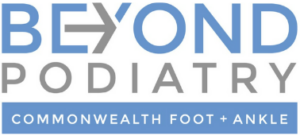PAIN MANAGEMENT FOR CONDITIONS
Note: For any foot condition, please consult your physician before taking any medication for pain management.
Ankle pain
Recurring or persistent (chronic) pain on the outer side of the ankle often develops after an injury, such as a sprained ankle.
The American Orthopaedic Foot and Ankle Society identifies both conservative and surgical treatment methods to alleviate this pain. Conservative treatments include:
- Anti-inflammatory medications, such as aspirin or ibuprofen to reduce swelling.
- Physical therapy, including tilt-board exercises directed at strengthening the muscles, restoring range of motion, and increasing the perception of joint position.
- An ankle brace or other support.
- An injection of a steroid medication.
- In the case of a fracture, immobilization to allow the bone to heal.
Almost half of all people who sprain their ankle once will experience additional ankle sprains and/or chronic pain. You can help prevent chronic pain from developing by following these simple steps:
- Follow your doctor’s instructions carefully and complete the prescribed physical rehabilitation program.
- Do not return to activity until cleared by your physician.
- When you do return to sports, use an ankle brace rather than taping the ankle. Bracing is more effective than taping in preventing ankle sprains.
- If you wear hi-top shoes, be sure to lace them properly and completely.
Arch pain
Plantar fasciitis is an inflammation of a thick, fibrous ligament in the arch of the foot. The plantar fascia (arch of the foot) attaches into the heel bone and fans out toward the ball of the foot, attaching into the base of the toes. If this ligament is stretched excessively it will become inflamed and begin to cause pain.
The main emphasis for treatment of arch pain is to reduce the forces that are causing the plantar fascia to stretch excessively. This includes calf muscle stretching, over the counter arch supports, and orthotics. Oral anti-inflammatory medications may be useful in controlling the pain.
Additionally, cortisone injections may be recommended for the treatment of plantar fasciitis.
Arthritis
Arthritis in the foot and ankle can be treated in many ways, including:
- Physical therapy and exercise.
- Orthotics or specially prescribed shoes.
- Foot soaks/paraffin baths.
- Ice packs.
- Massages.
- Over-the-counter anti-inflammatory medications, such as aspirin, ibuprofen, or acetaminophen products.
- Prescription nonsteroidal anti-inflammatory medications.
- Vitamins B6, B12, and folic acid.
Ball of the foot pain
Calluses are the most common source of pain on the ball of the foot. Treatment consists of periodic trimming or shaving the callus, padding the shoes to remove the pressure, using shoe orthotics, or, in severe cases, surgery.
Pain in the ball of the foot not associated with calluses can be a result of inflammation of a tendon in the toe, arthritis, inflammation of the joint, or a neuroma. Stiffness in the big toe and big toe joint (Hallux Limitus and Hallux Rigidus) and sesamoiditis, an inflammation of two small bones under the big toe joint, are also conditions that lead to pain in the ball of the foot.
While treatments vary based on the condition and individual case, techniques for reducing pain in the ball of the foot include:
- Physical therapy and exercise.
- Over-the-counter or prescription pain and/or anti-inflammatory medications.
- Orthotics or specially prescribed corrective shoes.
- Cortisone injections.
- Proper shoe wear.
Bunions
Most bunions can be treated without surgery by wearing protective pads to cushion the painful area, and by wearing properly-fitted shoes.
Bunion surgery, known as a bunionectomy, realigns the bone, ligaments, tendons, and nerves so the big toe can be brought back to its correct position. Many bunion surgeries are performed on a same-day, outpatient basis. However, a long recovery is common and may include persistent swelling and stiffness.
Heel pain
Plantar fasciitis is commonly traced to an inflammation of the ligament that stretches across the bottom of the foot. The condition can usually be treated effectively with conservative measures, such as use of anti-inflammatory medications, ice packs, stretching exercises, orthotic devices, and physical therapy.
Metatarsalgia
Foot pain in the ball of the foot, the area between the arch and toes, is generally referred to as metatarsalgia. The pain centers on one or more of the five bones (metatarsals) in this mid-portion of the foot.
A simple change of shoes may solve the problem. In more severe cases, podiatrists may prescribe a custom orthotic device to make sure the foot structures are in their proper position.
Top of the foot pain
There are several causes of pain on the top of the foot. The quality of the pain and its location helps podiatrists determine the cause.
Managing pain on the top of the foot can be aided by:
- A period of limiting activity.
- Below-the-knee walking casts.
- Functional orthotics.
- Oral anti-inflammatory medications.


